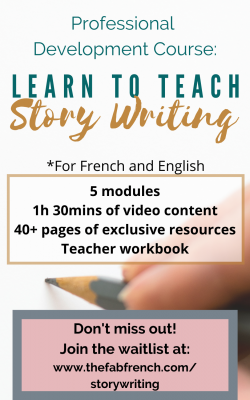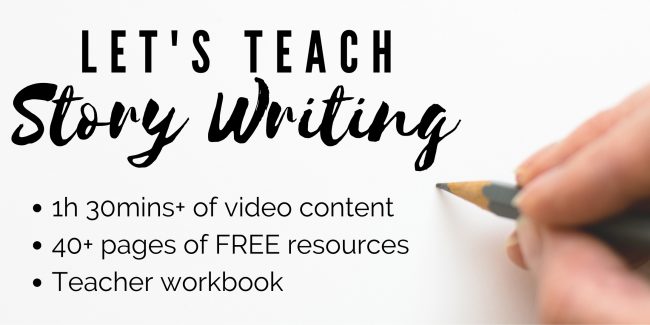Teaching story writing is something that so many of us do in our classrooms but are we teaching it in the most effective way? Are we teaching story writing explicitly or are we simply assigning it?
I have been guilty of simply assigning story writing which is what led to this blog post and me offering a course on this.
At the beginning of the school year I assigned my Gr 7 students to write a story so that I could assess their writing but when I read their stories I realized they had NO CLUE what they were doing.
I did a bunch of research and created my own 5-6 weeks story writing unit to teach story writing explicitly. I breakdown my unit into 5 developmentally appropriate units and we do a variety of lessons to practice each element.
If you are interested in the course, check it out here:
I decided to split the unit into the following 5 story writing elements: descriptive vocabulary, genre, plot structure, character development, and planning.
I’d like to break down these elements and explain why I chose to focus on them.
Descriptive vocabulary
Do you students use the same simple words ALL the time? Mine do! The most overused words are “said, very, big, small, nice, a lot, things”. I hate these words! We need to help our students steps outside of their comfort zones and discover new, rich vocabulary to strengthen their writing.
Genre
If our students don’t have a specific genre in mind their writing has no direction. Having them choose a genre helps them focus in their ideas, choose an appropriate vocabulary, and develop a good, strong character. Genres help our students focus their thoughts and ideas and help ensure that they are writing a coherent story.
Plot structure
Going along with genre, the students need to be able to follow a general plot structure. Understanding plot structure allows our students to organize their thoughts and ensure that their story flows in a natural way. My students often jump all over the place and a good understanding of plot structure helps them organize their ideas.
Character development
What do we fall in love with in books? The characters! A strong, well-rounded character can make ALL the difference when reading a story. We want to feel a connection to the characters and be able to understand their perspectives and their reasoning for their actions. Well developed characters really bring the story together.
Planning
Although this isn’t really a story element, it is something that absolutely NEEDS to be taught and supported. Our kiddos don’t know where to start when planning a story. For our kiddos who don’t like writing, planning helps them brainstorm and get some ideas on paper. For our kiddos who love writing, planning helps them organize all their amazing ideas into a coherent story.
Using these themes are my instructional topics, the stories my students went from being hot messes to interesting and rich stories that I couldn’t wait to read.
If you would like to follow this plan to teach story writing explicitly, join the waitlist for the course “How to Teach Story Writing”. You get 1h30mins of video content, 40+ pages of resources to use in your classroom, AND a teacher workbook to organize all the information and your ideas.
Sign up to make sure you don’t miss the Early Bird prices!!



